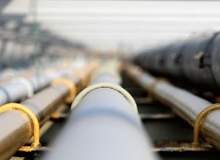
Balticconnector is a proposed natural gas pipeline between Estonia and Finland that will connect the gas grids of the two countries. The bidirectional pipeline is scheduled to be completed by 2020.
The transnational gas pipeline is planned to create alternative supply channels for the isolated Finnish gas market and connect it to the transmission network of rest of EU countries.
The pipeline project is being jointly developed by Elering from Estonia and Baltic Connector Oy from Finland. An agreement for the pipeline was signed between the European Commission, Baltic Connector Oy and Elering Gaas on 22 December 2015 to increase energy security in the eastern Baltic Sea region.
The European Commission has also granted the project a priority status, under which it has received financial assistance. The Estonian-Latvian interconnection is also being enhanced as part of the project development to allow for full capacity utilisation of the Balticconnector pipeline.
Project schedule of Balticonnector pipeline
A feasibility study on the project was completed in 2007 followed by an offshore front-end engineering and design (FEED) in 2015. The offshore environmental impact report was approved later that year leading to the start of seabed surveys, which are expected to continue until 2017.
Construction on the pipeline is expected to commence in 2018 with the pipeline beginning operations in 2020. The lifetime of the pipeline is approximately 50 years.
Balticconnector details
The 150km natural gas pipeline will be segmented into three divisions, namely a 22km Finnish onshore section, an 81km offshore section on the seabed of the Gulf of Finland, and a 47km Estonian onshore section.
It will connect Paldiski, Estonia, and Inkoo, Finland, and will have a capacity of 7.2 million cubic metres a day (Mm³/d) with a throughput of five terawatt hour a year (TWh/y) from the terminal. The pipeline will have a nominal diameter of 500mm and a pressure capacity of 80bar.
Carbon steel line pipes 12.2m-long will be used for constructing the pipeline and will be welded together. The pipelines will be 12.7mm-thick to protect against any collapses during the construction phase.
The line pipes will be welded on a pipe-lay vessel that will be used for the offshore installation.
Compressor and receiving stations
The gas metering and compressor stations in Finland will be located in Inkoo, whereas the Estonian gas metering and compressor station will be in Kersalu.
The compressor and receiving stations will be located at the offshore pipeline’s point of landing in both Inkoo and Paldiski. The compressor station will manage the gas pressure and flow rate according to the network’s operation requirement.
A control centre for monitoring and managing the pipeline and compressor stations will be based in Finland’s Kouvola natural gas centre. The compressor station will be used for the bidirectional gas supply and gas transmission to onshore and offshore pipelines, and equipped with gas leak detection and fire detection systems.
Funding for the Balticconnector
The pipeline project is estimated to cost €250m ($282.95m). The European Commission announced on 15 July 2016 that it will fund 75% of the project cost, amounting to €187.5m ($212.21m). The associated Estonia-Latvia gas connection modification project has also received a 50% funding from the European Commission.
The Commission had earlier granted €5.4m ($6.11m) for conducting studies related to the project development. The two countries will equally divide the project’s construction costs among themselves. Finland’s share in the project will be funded by the state as equity.
Key players involved
A feasibility study for the Balticconnector was conducted by Ramboll, which will also be the technical project management consultant and engineering consultant for the project.
The scope of the FEED performed by Ramboll included advanced free-spanning analyses, seabed intervention and landfall design at both ends of the offshore segment. Ramboll concluded the work in 2016 after beginning it in July 2015.


